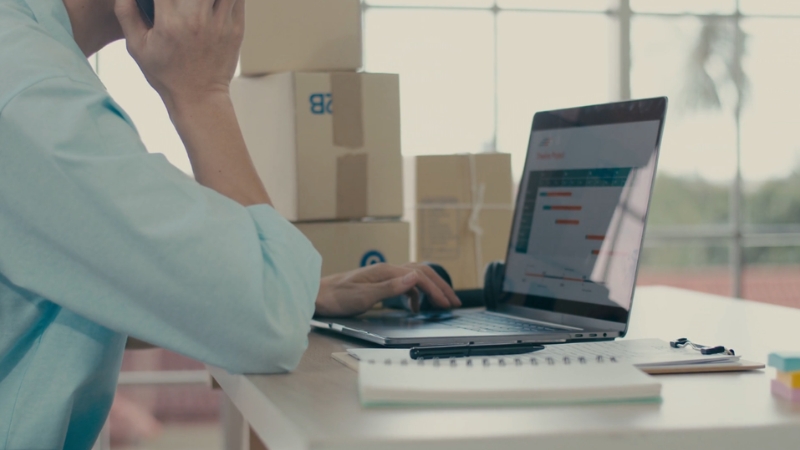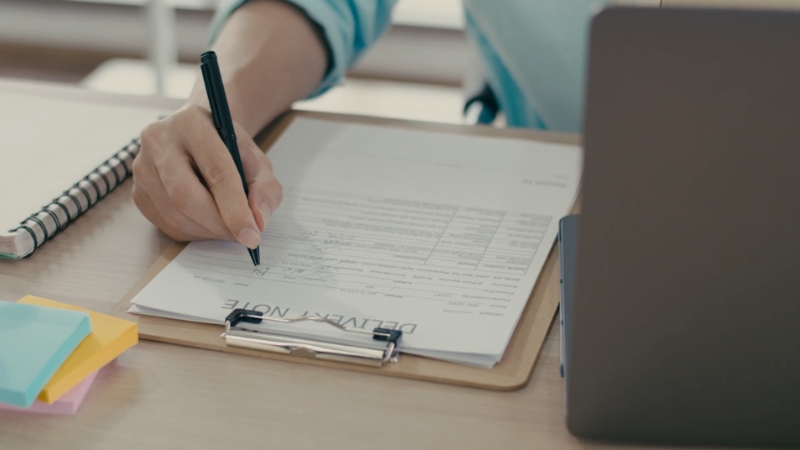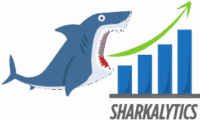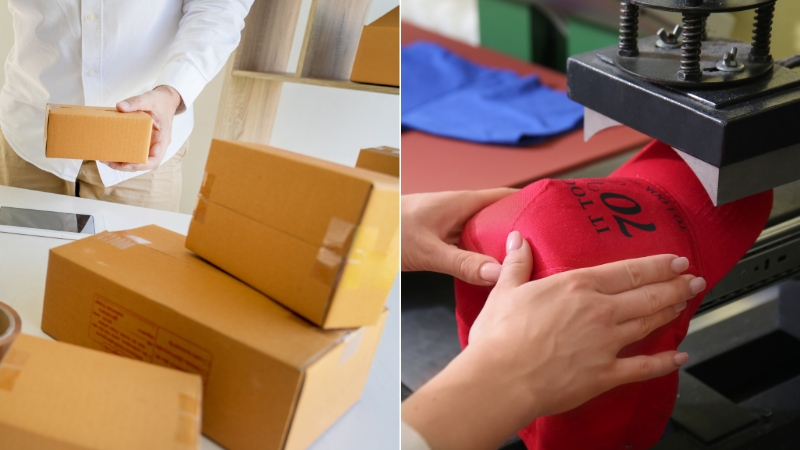In 2025, both dropshipping and print-on-demand (POD) are profitable, but they fit different business goals. If you want to scale fast with many products, dropshipping is stronger. If you want to own a brand and sell unique designs with higher loyalty, POD is the better fit.
The global dropshipping market stood at $365.7 billion in 2024 and is expected to hit $1.25 trillion by 2030, showing its dominance in volume and speed. POD is smaller but growing faster: from $10.2 billion in 2024 to more than $100 billion by 2034, proving its power in branded niches.
In simple terms: choose dropshipping for speed and scale, POD for brand and retention. Many of the best online entrepreneurs in 2025 actually combine both.
Dropshipping in 2025 – Speed and Scale

Dropshipping has become a trend-driven machine. Thanks to TikTok Shop, Shopify integrations, and U.S./EU-based suppliers, it no longer suffers from the extreme shipping delays of the past.
Many suppliers now deliver within 3–7 business days domestically, though international shipping still takes 7–15 days.
The strength of dropshipping is that you can test products instantly and pivot based on demand. For example, when LED water bottles went viral in early 2025, dropshippers who listed the product within a week captured thousands of sales before big-box retailers caught up. This speed to market is unmatched.
But it’s a low-margin business. Typical dropshipping margins sit around 15–35% before ads. Once you add paid ad spend, the real margin per order may be closer to 10–20%.
Example math:
- Retail price: $39.99
- Supplier cost: $14
- Gross margin before ads: $25.99
- Average ad spend per conversion: $18
- Final profit: ~$8 (20% margin)
This model is all about volume. You must constantly test products and scale the few winners. It works best if you:
- Are skilled in running paid ads (TikTok, Meta, Google).
- Have systems to quickly test new SKUs.
- Don’t mind building stores around short-lived fads.
Print on Demand in 2025 – Brand and Loyalty
Print on demand takes a slower but more sustainable route. Instead of selling generic items, you sell custom-designed products that are printed and shipped only when ordered. Companies like Printful, Printify, and Gelato now operate local fulfillment centers, cutting average delivery times to 2–7 business days.
POD’s strength is in brand ownership. Customers can’t find your exact products anywhere else.
For example, a mug with a unique cat design or a t-shirt with retro art isn’t just another commodity – it’s tied to your store’s identity. Because of this, POD allows for higher margins. A shirt that costs $10 to produce can sell for $29–39, leaving margins of 40–50% before ad spend.
This model works best if you:
- Have design skills or access to designers.
- Want to build a loyal customer base.
- Plan to sell through platforms like Etsy or branded Shopify stores.
It’s not about chasing quick trends-it’s about creating products that resonate with a niche audience. Repeat buyers are common, especially when the brand identity is strong.
Dropshipping vs Print on Demand Comparison
| Factor | Dropshipping | Print on Demand |
| Startup Cost | ~$500 (store + ads) | ~$500–1,000 (store + designs) |
| Margins | 15–35% (before ads) | 25–50% (before ads) |
| Shipping Speed | 3–7 days domestic, 7–15 days overseas | 2–7 days average |
| Scalability | Very high (hundreds of SKUs quickly) | Moderate (limited to design capacity) |
| Customer Loyalty | Low (products are generic) | High (products are unique) |
| Best Channel | Shopify, TikTok Shop | Etsy, Shopify, niche audiences |
| Risk | Refunds & supplier inconsistency | Creative risk if designs flop |
The Hybrid Strategy – Best of Both

The smartest entrepreneurs in 2025 often blend the two models. They start with dropshipping to test demand in a niche, then expand into POD to build brand loyalty.
Example flow:
- Test trending products through dropshipping (e.g., pet grooming gloves).
- Identify which niches sell (e.g., pet owners respond well).
- Launch POD products for that niche (custom pet mugs, shirts, or wall art).
- Build a brand that people recognize and come back to.
This way, dropshipping acts as a low-cost testing ground, while POD becomes the brand-building engine.
Many entrepreneurs in 2025 have realized that choosing only one model can limit growth. Dropshipping brings speed, testing capacity, and low upfront risk, while print on demand brings uniqueness, higher margins, and stronger brand loyalty.
Combining the two creates a balanced business that is both fast-moving and long-lasting.
The hybrid approach works because the strengths of each model cancel out the weaknesses of the other. Dropshipping alone often struggles with weak branding and high refund rates, while POD alone can be slow to scale and highly dependent on creative output.
But when you use dropshipping as a market validation tool and POD as a brand-building strategy, you get the best of both worlds.
How It Works in Practice
@smallbusinessmentor_ Sign you can start your dream business from home with the Print on Demand Dropshipping model. @Printful made Dropshipping way to easy with this one. #creatorsearchinsights #howtomakemoneyonline #howtostartabusiness #printful #howtostartdropshipping #dropshipping #businessideas #financetips ♬ Easy – Commodores
Start With Dropshipping to Test Trends
-
- Instead of sinking money into designs that may not sell, you first test demand with simple dropshipping products in a niche.
- Example: You launch a Shopify or TikTok Shop store with trending pet products—like grooming gloves, LED collars, or portable water bottles.
- You run small ad campaigns ($300–$500 per product) and measure which products gain traction.
- If one product starts converting at a customer acquisition cost (CAC) of $10–15 with a $25+ margin, you know the niche is viable.
Identify a Profitable Niche
-
- Data from your dropshipping campaigns tells you where the customer interest really lies.
- Suppose pet grooming gloves and LED collars both sell strongly. This signals that pet owners are responsive to novelty and utility products.
- Instead of guessing, you now have hard evidence about what people buy.
Introduce POD Products for the Same Niche
-
- Once the niche is validated, you expand with print-on-demand.
- Example: You design pet-themed t-shirts, mugs with breed-specific slogans, or wall prints with funny pet quotes.
- POD partners like Printify or Gelato print and ship on demand, so you don’t hold inventory.
- Margins are higher: a $10 POD mug can sell for $25, leaving room for a stronger brand presence.
Build a Cohesive Brand
-
- Dropshipping may get you the first wave of sales, but POD lets you keep customers coming back.
- Instead of only selling viral gadgets, your store evolves into a recognizable brand—“Happy Paws Co.” or “Retro Pets Supply.”
- You start collecting emails, running loyalty campaigns, and upselling POD items that are unique to your brand.
- Customers begin to associate your store not just with cheap trending products, but with original designs they can’t find elsewhere.
Which Model Works Best in 2025?
View this post on Instagram
Dropshipping works best if:
-
- You want quick cash flow.
- You enjoy running paid ads.
- You are okay with thin margins but large volume.
Print on Demand works best if:
-
- You want to own your designs.
- You care about repeat customers and brand identity.
- You’re willing to invest in creativity.
Final Word
In 2025, the truth is simple: dropshipping is best for speed and trend-chasing, POD is best for brand and long-term growth. Both are growing fast, and both benefit from the rise of TikTok Shop, Shopify, and Etsy as e-commerce powerhouses.
Using a SWOT analysis in project management offers the same kind of clarity because it forces you to see strengths, weaknesses, opportunities, and risks before committing to a direction.
The choice comes down to what kind of business you want to build: a fast-moving trend store or a branded creative company. And if you want the best of both worlds, use dropshipping to test and POD to scale into something lasting.
Dave Mustaine is a business writer and startup analyst at Sharkalytics.com. His articles break down what happens after the cameras stop rolling, highlighting both big wins and behind-the-scenes challenges.
With a background in entrepreneurship and data analytics, Dave brings a sharp, practical lens to startup success and failure. When he’s not writing, he mentors founders and speaks at entrepreneur events.



